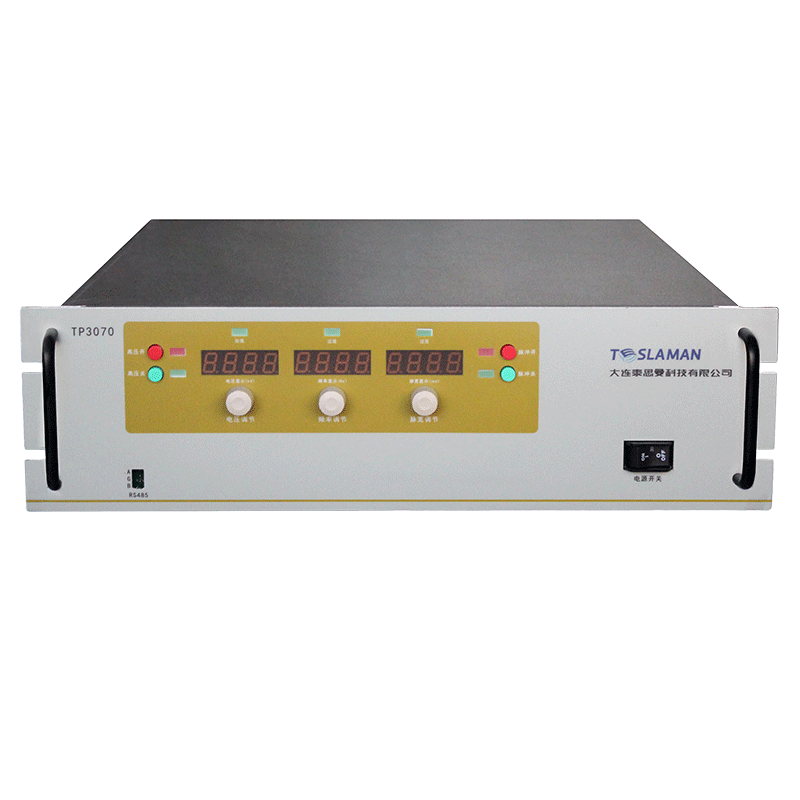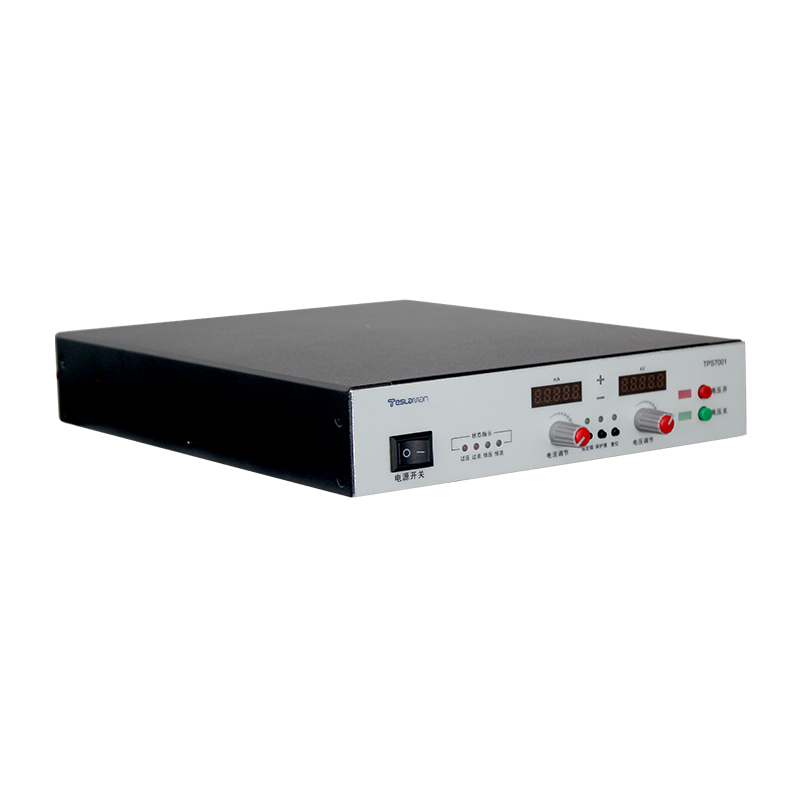Key Technologies for Discharge Stability Control in Excimer Laser High-Voltage Power Supplies
Excimer lasers (e.g., ArF, KrF) serve as core deep-ultraviolet light sources in semiconductor lithography, micro-processing, and medical applications. Their performance hinges on the discharge stability of high-voltage power supplies—voltage fluctuations, timing deviations, or electromagnetic interference can cause laser energy drift, gas degradation, and electrode erosion. Thus, stability control of high-voltage power supplies is critical for ensuring laser output quality. Key technologies to enhance discharge stability include:
1. Pulse Front Modulation and Solid-State Switching
Traditional thyratron switches exhibit pulse fronts exceeding 100 ns, leading to localized arcing and non-uniform energy deposition, which accelerate gas consumption and electrode damage. All-solid-state magnetic pulse compression (MPC) technology compresses the pulse front to 50–100 ns. This approach employs semiconductor switches (e.g., IGBTs) with multi-stage magnetic compression circuits: the first stage generates μs-level high-voltage pulses (10–20 kV), while subsequent stages compress the pulse width below 0.1 μs using magnetic saturation properties, reducing the front edge to under 90 ns. This significantly improves discharge uniformity, minimizes thermal loss, extends switch lifetime to over 10⁹ cycles, and supports high-repetition operation at 6 kHz.
Co-design principle: The pulse front must align with corona pre-ionization timing. Triggering pre-ionization 5–50 ns before the main discharge generates uniform electron clouds, enabling synchronized full-volume discharge and suppressing channel contraction.
2. Intelligent Closed-Loop Control and Adaptive Algorithms
Laser energy fluctuations primarily stem from deviations in discharge voltage amplitude. Overvoltage damages switching devices, while undervoltage causes incomplete cavity breakdown. A multi-parameter interlock control system is essential:
• Environmental monitoring: Real-time acquisition of pulse voltage, current, temperature, and leakage signals, with comparator circuits determining over/under-voltage states to generate interlock level signals.
• Adaptive regulation: PI (Proportional-Integral) algorithms combined with particle swarm optimization (PSO). PSO dynamically optimizes PI parameters (proportional gain Kp, integral gain Ki) via fitness functions to calculate voltage adjustments, enabling precise feedback control. This reduces single-pulse energy fluctuation from ±5% to ±0.8%.
3. Discharge Circuit Topology Innovation and Filamentary Discharge Suppression
At high repetition rates, cathode surfaces are prone to hotspot discharge, which degrades stable glow discharge into unstable filaments. Time-delayed switch conduction offers an effective solution:
• Peaking capacitor arrays: Multiple parallel capacitors arranged in spatial arrays to reduce local current density.
• Delayed conduction control: After the charging voltage reaches the breakdown threshold, switching devices (e.g., self-healing capacitors or IGBT modules) are triggered at preset delays (corresponding to the onset of filamentary discharge). This reduces filamentary discharge duration by over 40%, minimizing electrode damage and beam distortion.
4. Gas Composition Optimization and Photoionization Enhancement
Buffer gas types directly affect discharge uniformity. For ArF lasers:
• Ne replacing He: With Ne as the buffer, the electron depletion layer width is only 7 μm (vs. 15 μm for He), and the cathode sheath width is 11 μm (vs. 20 μm for He). Ne’s excited-state particles (Ne) replenish free electrons via secondary ionization, enhancing plasma density stability.
• Trace Xe doping: Xe’s ionization energy (12.1 eV) is lower than Ne’s excitation energy (14.6 eV). Under UV photons (e.g., 85 nm), Xe undergoes photoionization (Xe + hν → Xe⁺ + e), accelerating pre-ionization expansion and further reducing the discharge threshold voltage.
Conclusion: Technology Integration Pushing Performance Boundaries
Current stability control integrates multiple technologies: solid-state switching ensures pulse precision, closed-loop algorithms suppress fluctuations, circuit innovations mitigate abnormal discharges, and gas optimization enhances plasma uniformity. Future trends will focus on ultrafast magnetic materials (e.g., nanocrystalline cores compressing pulses to 20 ns) and integrated smart modules (FPGA-based real-time compensation for gas aging), addressing extreme requirements for laser linewidth stability (<0.1 pm) in next-generation EUV lithography.




















